| Weight | 1 lbs |
|---|---|
| Dimensions | 9 × 5 × 2 in |
| host | rabbit |
| isotype | IgG |
| clonality | polyclonal |
| concentration | 1 mg/mL |
| applications | ICC/IF, WB |
| reactivity | GABABR1 |
| available sizes | 100 µg |
rabbit anti-GABA (B)R1 polyclonal antibody 2393
$376.00
Antibody summary
- Rabbit polyclonal to GABA (B)R1
- Suitable for: WB
- Isotype: Whole IgG
- 100 µg
rabbit anti-GABA (B)R1 polyclonal antibody 2393
| antibody |
|---|
| Tested applications WB |
| Recommended dilutions Immunoblotting: use at 1:500-1:1,000 dilution. In immunoblots, a band of approximately 120 kD is detected. |
| Immunogen Peptide corresponding to aa 33-54 of the GABABR1 subunit. |
| Size and concentration 100µg and lot specific |
| Form liquid |
| Storage Instructions This antibody is stable for at least one (1) year at -20°C. Avoid multiple freeze- thaw cycles. |
| Storage buffer PBS, pH 7.4. |
| Purity protein affinity purification |
| Clonality polyclonal |
| Isotype IgG |
| Compatible secondaries goat anti-rabbit IgG, H&L chain specific, peroxidase conjugated, conjugated polyclonal antibody 9512 goat anti-rabbit IgG, H&L chain specific, biotin conjugated polyclonal antibody 2079 goat anti-rabbit IgG, H&L chain specific, FITC conjugated polyclonal antibody 7863 goat anti-rabbit IgG, H&L chain specific, Cross Absorbed polyclonal antibody 2371 goat anti-rabbit IgG, H&L chain specific, biotin conjugated polyclonal antibody, crossabsorbed 1715 goat anti-rabbit IgG, H&L chain specific, FITC conjugated polyclonal antibody, crossabsorbed 1720 |
| Isotype control Rabbit polyclonal - Isotype Control |
| target relevance |
|---|
| Protein names Gamma-aminobutyric acid type B receptor subunit 1 (GABA-B receptor 1) (GABA-B-R1) (GABA-BR1) (GABABR1) (Gb1) |
| Gene names GABBR1,GABBR1 GPRC3A |
| Protein family G-protein coupled receptor 3 family, GABA-B receptor subfamily |
| Mass 108320Da |
| Function FUNCTION: Component of a heterodimeric G-protein coupled receptor for GABA, formed by GABBR1 and GABBR2 (PubMed:15617512, PubMed:18165688, PubMed:22660477, PubMed:24305054, PubMed:36103875, PubMed:9872316, PubMed:9872744). Within the heterodimeric GABA receptor, only GABBR1 seems to bind agonists, while GABBR2 mediates coupling to G proteins (PubMed:18165688). Ligand binding causes a conformation change that triggers signaling via guanine nucleotide-binding proteins (G proteins) and modulates the activity of down-stream effectors, such as adenylate cyclase (PubMed:10075644, PubMed:10773016, PubMed:10906333, PubMed:24305054, PubMed:9872744). Signaling inhibits adenylate cyclase, stimulates phospholipase A2, activates potassium channels, inactivates voltage-dependent calcium-channels and modulates inositol phospholipid hydrolysis (PubMed:10075644). Calcium is required for high affinity binding to GABA (By similarity). Plays a critical role in the fine-tuning of inhibitory synaptic transmission (PubMed:9844003). Pre-synaptic GABA receptor inhibits neurotransmitter release by down-regulating high-voltage activated calcium channels, whereas postsynaptic GABA receptor decreases neuronal excitability by activating a prominent inwardly rectifying potassium (Kir) conductance that underlies the late inhibitory postsynaptic potentials (PubMed:10075644, PubMed:22660477, PubMed:9844003, PubMed:9872316, PubMed:9872744). Not only implicated in synaptic inhibition but also in hippocampal long-term potentiation, slow wave sleep, muscle relaxation and antinociception (Probable). Activated by (-)-baclofen, cgp27492 and blocked by phaclofen (PubMed:24305054, PubMed:9844003, PubMed:9872316). {ECO:0000250|UniProtKB:Q9Z0U4, ECO:0000269|PubMed:10075644, ECO:0000269|PubMed:10773016, ECO:0000269|PubMed:10906333, ECO:0000269|PubMed:15617512, ECO:0000269|PubMed:18165688, ECO:0000269|PubMed:22660477, ECO:0000269|PubMed:24305054, ECO:0000269|PubMed:36103875, ECO:0000269|PubMed:9844003, ECO:0000269|PubMed:9872316, ECO:0000269|PubMed:9872744, ECO:0000305}.; FUNCTION: Isoform 1E may regulate the formation of functional GABBR1/GABBR2 heterodimers by competing for GABBR2 binding. This could explain the observation that certain small molecule ligands exhibit differential affinity for central versus peripheral sites. |
| Subellular location SUBCELLULAR LOCATION: Cell membrane {ECO:0000269|PubMed:15617512}; Multi-pass membrane protein {ECO:0000305}. Postsynaptic cell membrane {ECO:0000250|UniProtKB:Q9Z0U4}; Multi-pass membrane protein {ECO:0000305}. Cell projection, dendrite {ECO:0000250|UniProtKB:Q9Z0U4}. Note=Colocalizes with ATF4 in hippocampal neuron dendritic membranes (By similarity). Coexpression of GABBR1 and GABBR2 is required for GABBR1 maturation and transport to the plasma membrane (PubMed:15617512). {ECO:0000250|UniProtKB:Q9Z0U4, ECO:0000269|PubMed:15617512}.; SUBCELLULAR LOCATION: [Isoform 1E]: Secreted {ECO:0000305}. |
| Tissues TISSUE SPECIFICITY: Highly expressed in brain (PubMed:9753614, PubMed:9844003, PubMed:9872744). Weakly expressed in heart, small intestine and uterus. Isoform 1A: Mainly expressed in granular cell and molecular layer (PubMed:9844003). Isoform 1B: Mainly expressed in Purkinje cells (PubMed:9844003). Isoform 1E: Predominantly expressed in peripheral tissues as kidney, lung, trachea, colon, small intestine, stomach, bone marrow, thymus and mammary gland (PubMed:10906333). {ECO:0000269|PubMed:10906333, ECO:0000269|PubMed:9753614, ECO:0000269|PubMed:9844003, ECO:0000269|PubMed:9872744}. |
| Structure SUBUNIT: Heterodimer of GABBR1 and GABBR2 (PubMed:10773016, PubMed:15617512, PubMed:18165688, PubMed:22660477, PubMed:24305054, PubMed:9872316, PubMed:9872744). Homodimers may form, but are inactive (PubMed:15617512, PubMed:9872316). Isoform 1E (without C-terminal intracellular domain) is unable to dimerize via a coiled-coil interaction with GABBR2 (PubMed:10906333). Interacts (via C-terminus) with ATF4 (via leucine zipper domain) (By similarity). Interacts with JAKMIP1 (PubMed:14718537). {ECO:0000250|UniProtKB:Q9Z0U4, ECO:0000269|PubMed:10773016, ECO:0000269|PubMed:10906333, ECO:0000269|PubMed:14718537, ECO:0000269|PubMed:15617512, ECO:0000269|PubMed:18165688, ECO:0000269|PubMed:22660477, ECO:0000269|PubMed:24305054, ECO:0000269|PubMed:9872316, ECO:0000269|PubMed:9872744}. |
| Domain DOMAIN: Alpha-helical parts of the C-terminal intracellular region mediate heterodimeric interaction with GABBR2 (PubMed:9872744). The linker region between the transmembrane domain 3 (TM3) and the transmembrane domain 4 (TM4) probably plays a role in the specificity for G-protein coupling (PubMed:9844003). {ECO:0000305|PubMed:9844003, ECO:0000305|PubMed:9872744}. |
| Involvement in disease DISEASE: Neurodevelopmental disorder with language delay and variable cognitive abnormalities (NEDLC) [MIM:620502]: An autosomal dominant disorder characterized by language delay ranging from mild to severe, varying degrees of intellectual disability, and learning difficulties. Additional features include early motor delay, muscular hypotonia, behavioral abnormalities, sleep disorders, and seizures. {ECO:0000269|PubMed:36103875}. Note=The disease is caused by variants affecting the gene represented in this entry. |
| Target Relevance information above includes information from UniProt accession: Q9UBS5 |
| The UniProt Consortium |
Data
| No results found |
Publications
Warning: Cannot modify header information - headers already sent by (output started at /www/benchmarkantibodiescom_769/public/wp-includes/script-loader.php:3015) in /www/benchmarkantibodiescom_769/public/wp-content/plugins/shortcode-manager/shortcode-manager.php(453) : eval()'d code on line 3
Publications
| pmid | title | authors | citation |
|---|---|---|---|
| We haven't added any publications to our database yet. | |||
Protocols
| relevant to this product |
|---|
| Western blot IHC ICC |
Documents
| # | SDS | Certificate | |
|---|---|---|---|
| Please enter your product and batch number here to retrieve product datasheet, SDS, and QC information. | |||
Only logged in customers who have purchased this product may leave a review.
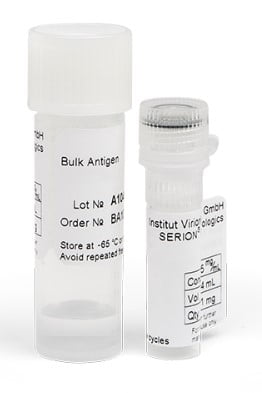
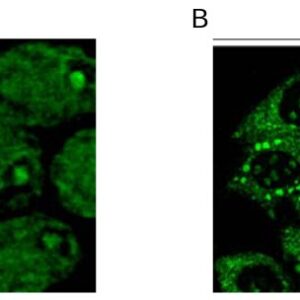
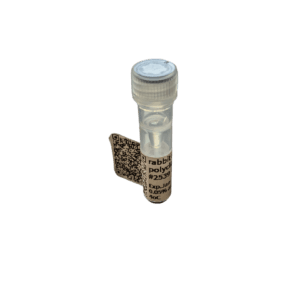
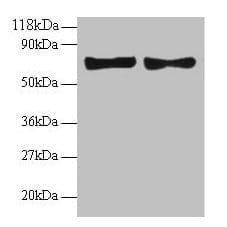
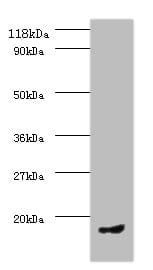

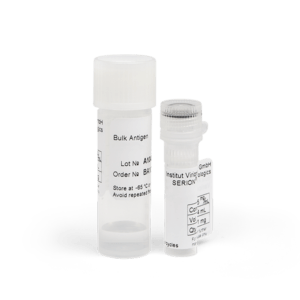
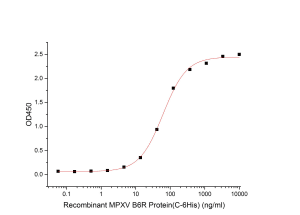
Reviews
There are no reviews yet.